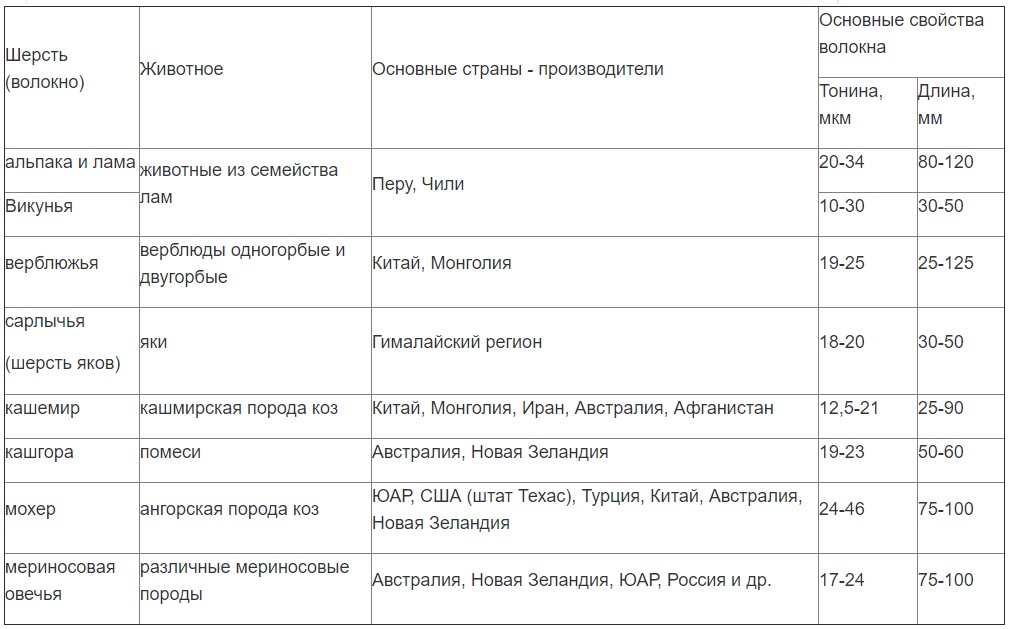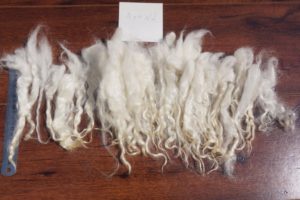All types of wool have their own characteristics that determine its quality and scope of application. When determining the class of yarn, great importance is given to gloss, thickness, elasticity and other important characteristics of the raw material. There are also technological properties, such as ease of spinning and feltability, which determine the cost and class of the fiber..
What is wool fineness?
 The term "fineness" means nothing more than "thickness". This is an important indicator of quality raw materials. To determine this parameter, the cross-sectional diameter of the villi is measured. The indicator is measured in micrometers, which is a thousandth of 1 millimeter.
The term "fineness" means nothing more than "thickness". This is an important indicator of quality raw materials. To determine this parameter, the cross-sectional diameter of the villi is measured. The indicator is measured in micrometers, which is a thousandth of 1 millimeter.
The quality of the thread, its strength and thickness subsequently depend on the size of the fineness.. The range of thickness in sheep wool is huge, from 10 to 130 microns. Moreover, at different times of the year and for different animals, the parameters will vary greatly.
Important! The degree of fiber thickness and its uniformity determine the quality of the future yarn. The better the fiber, the better the quality of the knitting thread.
What does it depend on?
There are a number of factors that determine the degree of fiber thickness:
 breed and individual characteristics (methods of keeping and personal characteristics of each sheep have a serious impact on the quality of the fiber);
breed and individual characteristics (methods of keeping and personal characteristics of each sheep have a serious impact on the quality of the fiber);- gender of the animal (rams have a coarser fleece than ewes; when using fine-fleeced rams in breeding, the lambs receive fine, high-quality pile, which is later used for the production of elite yarn);
- age of the sheep (in small lambs the wool may become coarser, but later, by 4–6 months of life, it becomes very soft and thin; subsequently, after 4 years of the sheep’s life, the wool again becomes coarse and thick);
- nutrition (particular attention is paid to the correct and high-quality nutrition of the sheep; with insufficient feeding, the concept of “hungry thinness” arises).
Important! In the process of raising fine-fleece sheep, attention must be paid to many factors to ensure that the fleece is dense and strong.
Differences in the thinness of different animals
Depending on the breed of the animal, the wool thickness is determined. The finest and most exclusive fibers are found in goats and vicuñas, animals from the llama breed. They produce fleece with a fineness of 10 to 21 microns. Angora goat breeds, merino sheep breeds, camels and various crossbreeds specially bred to produce fine wool raw materials can also boast of particularly fine raw materials.

Methods for determining wool fineness
In large-scale production, the organoleptic method is used. It involves separating 3–5 staples of raw material from the fleece obtained after shearing. Each of the taken fragments is stretched on both sides until a thin mesh is formed, and the thickness of the fibers and the uniformity of the raw material are assessed.
In some cases, if there is disagreement about fineness, measurement according to fiber standards is used. A To accurately determine the cross-sectional diameter, a laboratory method is used to study the pile under a microscope and measure it using special equipment.
What is hungry tone?
 Feeding a sheep to obtain wool must be correct and sufficient. If the animal does not receive sufficient feeding for the growth of the fleece, the fleece becomes uneven and the hair becomes thinner. This is called hungry tone.
Feeding a sheep to obtain wool must be correct and sufficient. If the animal does not receive sufficient feeding for the growth of the fleece, the fleece becomes uneven and the hair becomes thinner. This is called hungry tone.
As a rule, at this moment the animal already has health problems. Hungry thinness is considered a significant vice. It is clearly visible even to the naked eye; so-called re-marks appear on the fur, places of noticeable thinning of the fleece. If the owners of the sheep begin to eat properly again, the wool begins to thicken, but the hungry fineness is clearly indicated, located at the same horizontal level.


 breed and individual characteristics (methods of keeping and personal characteristics of each sheep have a serious impact on the quality of the fiber);
breed and individual characteristics (methods of keeping and personal characteristics of each sheep have a serious impact on the quality of the fiber); 1
1





